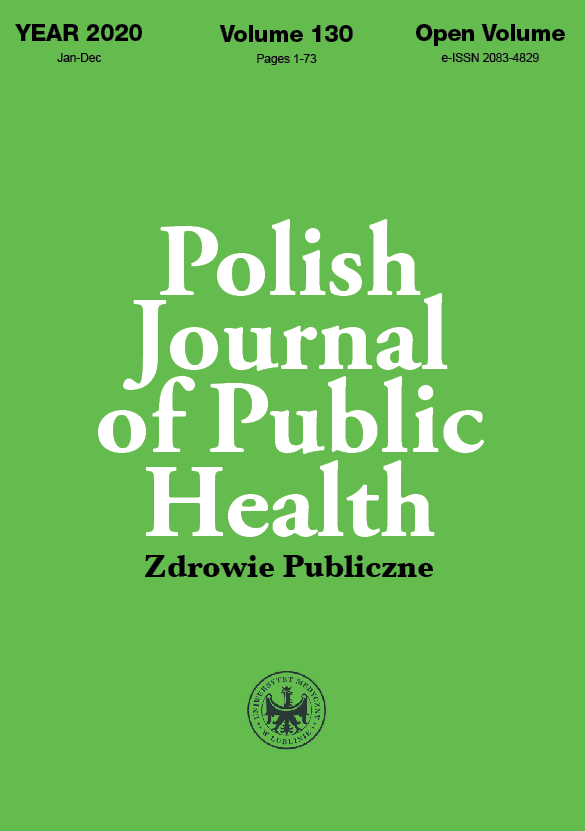Ageism attitudes of Ukrainian students
DOI:
https://doi.org/10.2478/pjph-2020-0005Keywords:
Ageism attitudes, conformism, control locus, youth ageAbstract
Introduction. The article is devoted to the study of factors that determine the students’ ageism attitudes, as well as their perception of the image “I am the old”.
Aim. To investigate the connection between ageism attitudes with the indicators of conformism and control locus.
Materials and methods. Sample: 100 students of the Faculty of Psychology, Taras Shevchenko National University of Kyiv (specialty “social pedagogy” and “social work”). Toolkit: Leary interpersonal communication skills test, The level of empathy test (I. Yusupov), Big-5 personality questionnaire, The locus of control test (J. Rotter), Questionnaire of ageism attitudes (E. Krainikov).
Results. Younger youths are more conformal and less empathic than older youths. Regarding the openness to the new experience, there were no significant differences between the respondents of both groups. Older youths are characterized by internal control locus comparing to younger youths. In addition, older youths have more positive and objective view to aging and old age. On the contrary, younger youths are more biased towards aging and old age.
Conclusions. The low level of conformism contributes to the formation of positive ageism attitudes, with the relative adoption of the image “I am the old”; the average level of conformism contributes to a balanced approach to aging and old age; a high level of conformism contributes to the formation of a negative ageism attitudes, testifies to the rejection of the image “I am the old”. Also, the ageism attitudes are affected by the level of subjective control. The internal control locus correlates with more positive ageism attitudes. Youth associates with a decrease in the level of conformism and increased control of the internal locus; therefore, older youths show more positive ageism attitudes and are likely to adopt the image “I am the old”.
References
1.Krainikov E. Gerontology: Dictionary-directory. Kyiv: Palyvoda Publisher; 2010. p.352.
2.Nelson TD. Psychology of prejudice (2nd ed). United Kingdom: Pearson; 2005. p. 336.
3.Krainikov E. Old Age: The age of compensation against the age of deficit. Bulletin of the Taras Shevchenko National University of Kyiv. Series: Psychology. 2014;1(1): 45-9.
4.Krainikov, E. Gerontopsychology: Handbook. Kyiv: Publishing of Taras Shevchenko National University of Kyiv; 2018. p. 231.
5.Craig GJ, Baucum D. Human Development (9th ed). United Kingdom: Pearson; 2001. p. 736.
6.Newcombe N. Child development: Change over time (8th ed). United Kingdom: Harpercollins College Div; 1995. p. 585.
7.Berk LE. Child development (9th ed). United Kingdom: Pearson; 2013.
8.The Great Encyclopaedia of Psychological tests (contributing author A. Karelin). Moscow: Exmo; 2006. p. 416.
9.Pervin LA, John OP. Personality: Theory and research (9th ed). New York: John Wiley & Sons; 2004. p.640.
10.Anastasi A, Urbina,S. Psychological Testing (7th ed). United Kingdom: Pearson; 1997. p.736 .
11.Ageev V. Intergroup Interaction. Moscow: Publishing of Moscow University; 1990. p. 240 .
12.Shibutani T. Society and personality: An interactionist approach to social psychology. New Jersey:Transaction Publisher; 1991. p. 648.
Downloads
Published
Issue
Section
License
Copyright (c) 2021 Polish Journal of Public Health

This work is licensed under a Creative Commons Attribution-NonCommercial-NoDerivatives 3.0 Unported License.


